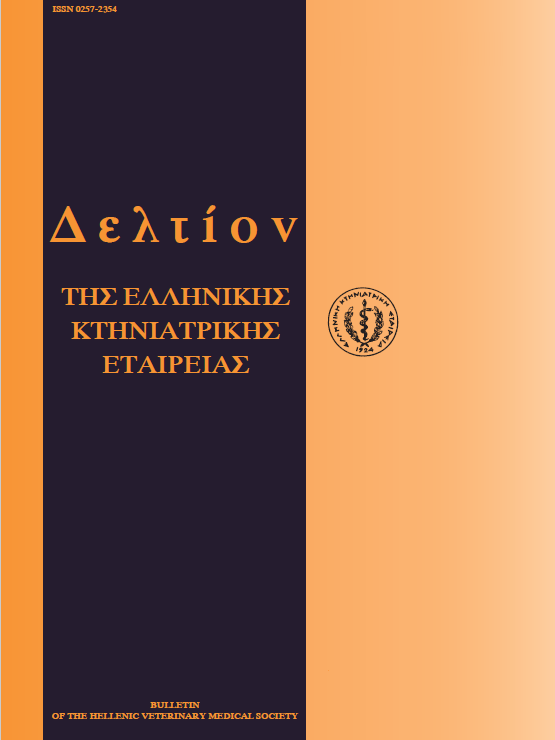Bovine Spongiform Encephalopathy and Public Health
Résumé
Bovine Spongiform Encephalopathy (BSE) is a transmissible degenerative disease of the central nervous system. It belongs to a group of diseases which affect man and various kinds of animals and they have a similar histopathological appearance. The harmful agent of BSE and all the others spongiform encephalopathies have not been totally clarified. Today according to the predominant opinion this agent is consisted mainly or/and only of an abnormal protein, which is called prion. In various observations the harmful agent appears like proteinaceous cylinders which are consisted of aggregations or polymerized forms of the agent and it is called prion-protein (PrP). It has been proved that there are two isoforms of PrP. The first of them, called PrPc, is produced from many cells of man and animals and consists a cellular structural element. The second, called PrPs t, due to its specific properties, it is considered to be pathological and responsible for the spongiform encephalopathies. The replication of PrPsc seems to take place in the lysosomes of central nervous system cells, dendritic, and other reticular cells of the lymphatic organs through transformation of PrPc into PrPsc. It appears BSE caused by feeding meat and bone meals to cattle which were originated from scrapie infected sheep. Refering to the pathogenesis originating from experimental data it seems that initially the PrF* enters the body by food and afterwards is settled in various lymphoid organs where the first replication takes place. It is believed that BSE is transmitted through the nerves to the CNS, where it creates the characteristic lesions of vacuolar degeneration of the neurons and finally the spongiosis. Then the clinical signs are expressed. The nervous signs characterised by behavioural alterations of the animals and kinetic abnormalities. The diagnosis of the disease is made by the observation of the histopathological lesions, the detection of Scrapie Associated Fibrils-SAF by EM, the immunohistochemical detection of prpsc i n histological samples or by electrophoresis (Western blotting test). BSE was proved to be transmissible to other animals and there is a possibility that it could be done to man through the food chain. According to the above in these years, from the appearance of the disease until now, have been taken bans from Great Britain as well as from E.U. for the eradication of the disease and the protection of the public health. These instructions should be followed by the authorities and additionally the consumers ought to be informed for the possible danger of various animal products.
Article Details
- Comment citer
-
KALDRYMIDOU (Ε. ΚΑΛΔΡΥΜΙΔΟΥ) E., KANAKOUDIS (Γ. ΚΑΝΑΚΟΥΔΗΣ) G., KATSARAS (Κ. ΚΑΤΣΑΡΑΣ) K., TSANGARIS (Θ. ΤΣΑΓΓΑΡΗΣ) T., & PAPAIOANNOU (Ν. ΠAΠΑΪΩΑNNOΥ) N. (2018). Bovine Spongiform Encephalopathy and Public Health. Journal of the Hellenic Veterinary Medical Society, 49(3), 171–181. https://doi.org/10.12681/jhvms.15768
- Numéro
- Vol. 49 No 3 (1998)
- Rubrique
- Review Articles

Ce travail est disponible sous licence Creative Commons Attribution - Pas d’Utilisation Commerciale 4.0 International.
Authors who publish with this journal agree to the following terms:
· Authors retain copyright and grant the journal right of first publication with the work simultaneously licensed under a Creative Commons Attribution Non-Commercial License that allows others to share the work with an acknowledgement of the work's authorship and initial publication in this journal.
· Authors are able to enter into separate, additional contractual arrangements for the non-exclusive distribution of the journal's published version of the work (e.g. post it to an institutional repository or publish it in a book), with an acknowledgement of its initial publication in this journal.
· Authors are permitted and encouraged to post their work online (preferably in institutional repositories or on their website) prior to and during the submission process, as it can lead to productive exchanges, as well as earlier and greater citation of published work.









